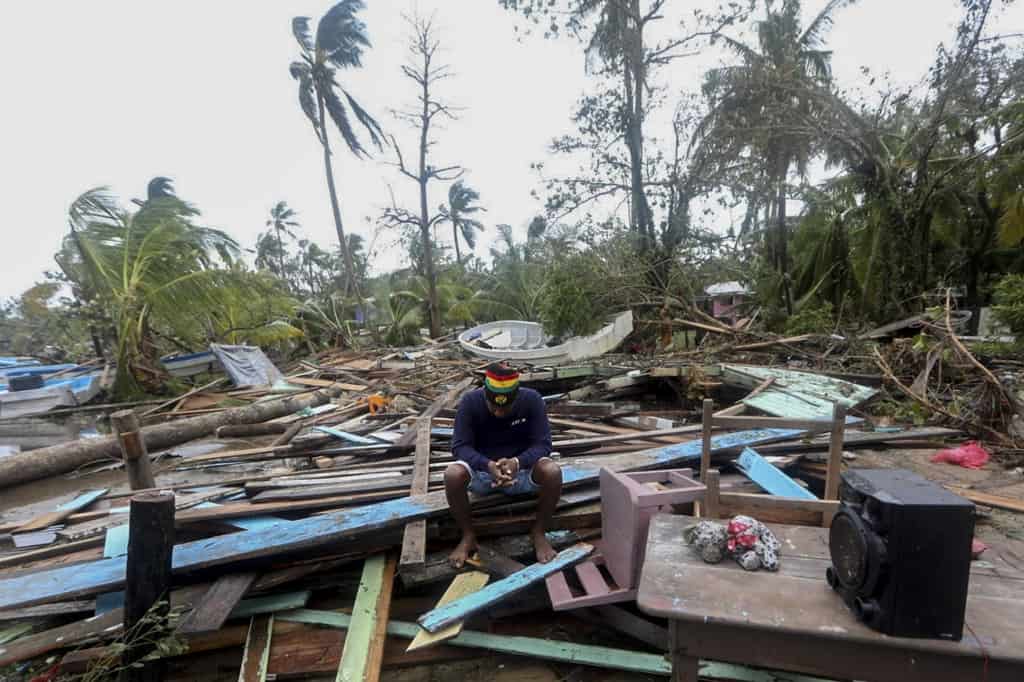The death toll in Central America from Hurricane Eta rose to at least 18 on Thursday as the storm weakened into a tropical depression, while rising floodwaters and a wake of destruction in Nicaragua, Honduras and Guatemala left thousands without shelter and at risk of landslides.
Four people died in landslides in Guatemala, including two children whose family dwelling was swept away.
Landslides also claimed the lives of two children in Honduras, emergency services reported Thursday, while a US citizen and his wife died when their home was buried by mud in Costa Rica.
Eta tore into Central America as a Category 4 hurricane on Tuesday, devastating impoverished coastal areas of northern Nicaragua before weakening to a tropical depression by Wednesday as it pushed north through Honduras, Guatemala and Costa Rica.
The depression was packing “intense and catastrophic” rains as it closed in Thursday on the Honduran capital Tegucigalpa and its population of one million, the Honduran disaster agency COPECO warned.
Widespread flooding
Honduran President Juan Orlando Hernandez ordered the army to mobilize helicopters and boats to evacuate inundated areas.
In the north of the country, many people were forced to take refuge on the roofs of their houses as floodwaters rose, relief agencies said.
Three thousand people had already been evacuated from the path of the storm on Wednesday, COPECO said.
Two children, an eight-year-old and a toddler of 11 months, died when a mudslide swept their home away in the northwestern department of Santa Barbara.
“A house was buried, leaving as a result two minors dead,” police said in a statement.
Two other children were killed in similar circumstances in the country’s south, authorities reported Wednesday.
Meanwhile, a 71-year-old American and his 51-year-old Costa Rican wife died when a landslide buried their home in the southern canton of Coto Brus, on the border with Panama. Their bodies were recovered by emergency workers.
The four people killed in Guatemala were swept away in mudslides as rain-saturated hillsides gave way.
They included two children, aged two and 11, who were killed when their home was swept away in the village of Los Triagles, in the country’s northern Quiche department, according to David de Leon of the Disaster Reduction Coordinating Committee, CONRED.
Another person died in a village in the same region, where two other people are reported missing.
The fourth victim died in Chinaulta, just north of Guatemala City.
Landslides swept away roads and at least five bridges, and the highway linking the capital Tegucigalpa with second city San Pedro Sula was cut off by a mudslide, it said.
Authorities evacuated around 700 prisoners in the city of El Progreso, north of the capital, after the site was swamped by floodwaters.
In neighboring La Lima, hundreds of families fled their homes and took refuge in makeshift plastic and sheet metal shelters erected along a highway median.
Flash flooding warning
Even as Eta eased to a tropical depression, the US National Hurricane Center continued to warn of “life-threatening flash flooding” over portions of Central America.
Eta slammed ashore at the northern Nicaraguan coastal town of Bilwi — also known as Puerto Cabezas — on Tuesday packing winds of 130 miles (210 kilometers per) per hour that knocked over walls, uprooted trees, downed power lines and tore roofs off dwellings.
It left impoverished indigenous communities along Nicaragua’s northern coast underwater, and swept away several coastal villages.
The hurricane is likely to have a devastating effect on the communities’ main livelihoods of fishing and agriculture, said the World Food Programme (WFP), which has sent 80 tons of food aid to the region.
As the surface layer of oceans warms due to climate change, hurricanes are becoming more powerful and carrying more water, posing an increasing threat to the world’s coastal communities, scientists say.
Storm surges amplified by rising seas can be especially devastating.






